More than 20,000 photos were entered into the 2022 Bird Photographer of the Year competition. This year photographers submitted photos from 115 different countries to compete for a £5,000 cash prize and the prestigious title.
Single file
Ben Krank, South Africa. Category: Best Portrait.
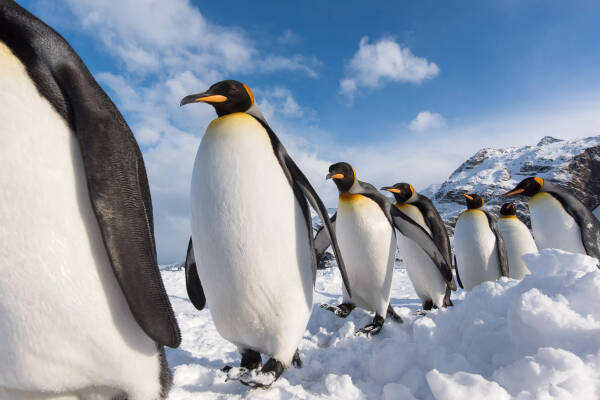
On land, king penguins tend to be creatures of habit, often following well-traveled paths when traveling from the ocean to their nests. I took advantage of this behavior to capture this image, hiding the camera on the edge of one of the paths and camouflaging it with snow. I took this photo using a wireless trigger as the birds marched in an orderly file.
The Nikon D810 comes with a Nikon 18–35mm f/3.5–4.5 lens. Focal length 23mm; 1/500 sec; f/11; ISO 200.
Cartoon bird raises its "hand"
Liu Yongqiang, Malaysia. Category: Best Portrait.
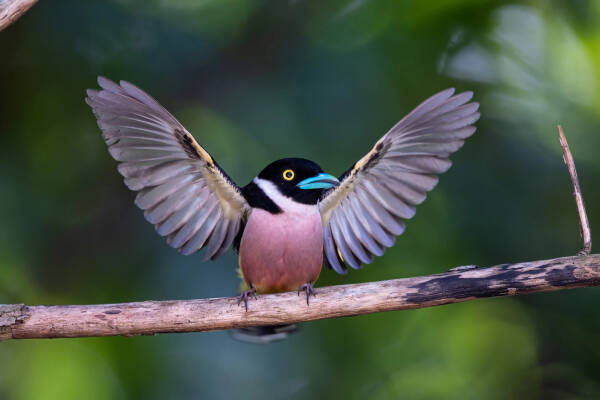
It was the start of the breeding season and the black-and-yellow broadbill was making a lot of noise to attract a mate. Courtship behavior involves lots of loud vocalizations and attention-seeking wing spreads. To me, the colors and patterns of the feathers are like those artists would use to depict cartoons - stylized, but in a way that doesn't quite resemble real birds.
The Fujifilm X-T4 comes with a Canon 500mm f/4 II lens. Focal length 500mm; 1/250 sec; f/4.5; ISO 400.
Manitoba Burrowing Owl Recovery Plan
Walter Potrebka, Canada. Category: Conservation Award

I spent 2021 documenting the work of the Manitoba Burrowing Owl Recovery Program. As the name of the project suggests, it is working to rebuild the burrowing owl population in Manitoba, Canada. The approach includes reintroduction of owl pairs and juvenile wild owl surveys, habitat improvement and community engagement. The owls are reintroduced each breeding season with the cooperation of private landowners. Despite these efforts, fewer than ten nesting pairs of wild burrowing owls have been recorded in Manitoba over the past decade. To the team's delight, in 2021, with the help of local farmers, a wild nest was reported containing six healthy owls, the first nest observed since 2011!
The Sony A1 comes with a Sony 70–200mm f/4 G lens. Focal length 70mm; 1/80 sec; f/6.3; ISO 320.
Wart head
Leander Hill, Austria. Category: Best Portrait.
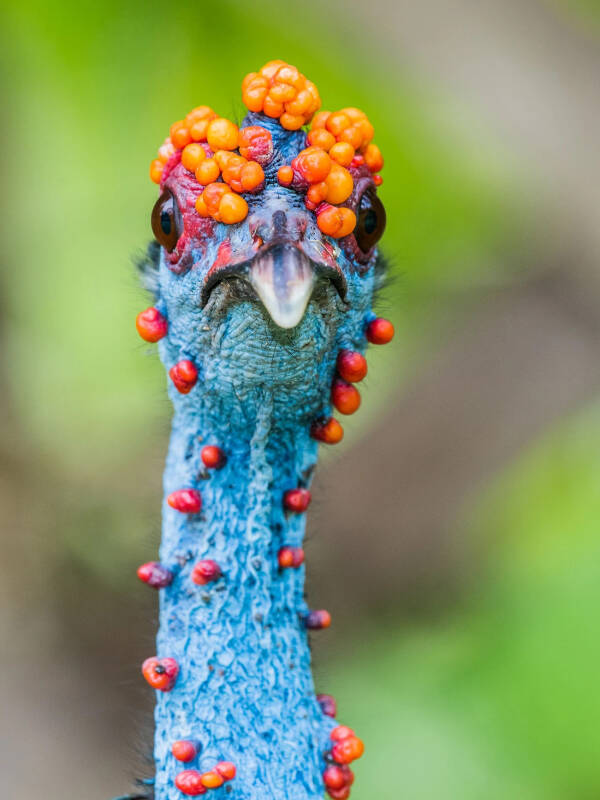
The color and structure of the male monocular turkey's head exceeds even that of its closest relative, the North American wild turkey (Meleagris gallopavo). I've always wondered if the orange warts covering the head and neck serve a purpose other than sexual selection - they look so extravagant. In an effort to show the birds in a different way than they are usually seen, I chose this frontal view when this man made eye contact with me on a private reserve in Belize.
The Nikon D810 comes with a Nikon 200–500mm f/5.6 lens. Focal length 500mm; 1/250 sec; f/6.3; ISO 500.
Struggle
Ellend Harberg, Norway. Category: Bird Behavior.
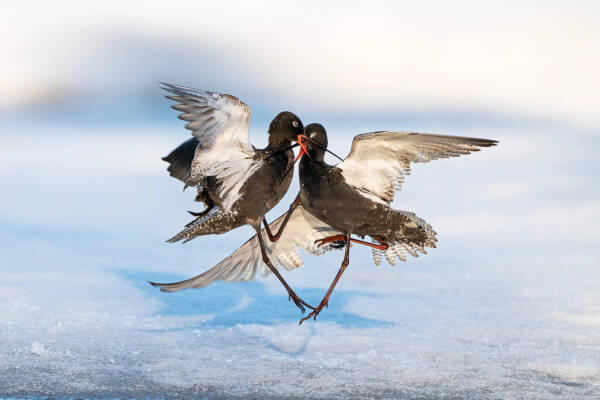
In 2020, spring came late in Finnmark, and when the first batch of migratory birds arrived, there was still thick snow here. As a result, there are only a few places on the river with open water, where many waders gather in search of food while waiting for the snow to melt on their nesting grounds. I spent several days in the hide and witnessed some interesting behavior, including brutal fighting between rival males, possibly fueled by the frustration of being snowbound. The most impressive one occurred between these two Spotted Redshanks.
The Nikon D850 features a Nikon 180–400mm f/4 lens and 1.4x teleconverter. Focal length 550mm; 1/2,500 sec; f/6.3; ISO 1,600.
Full Contact Information
Gabor Barros, Hungary. Category: Bird Behavior.
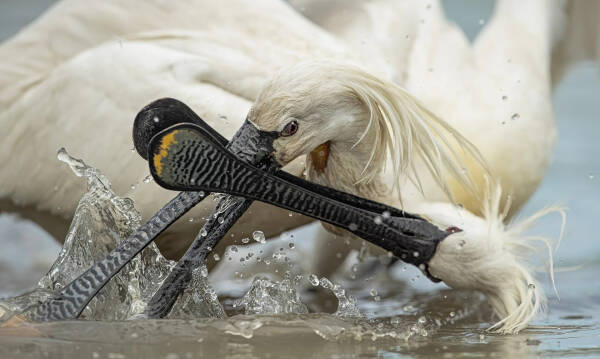
This photo was taken on my second trip to this small pond. On my first visit there were lots of birdlife and lots of opportunities for action photos. Now, however, silence is my companion. All I saw was a lone gray heron (Ardea cinerea) attacking any bird that came near the pond.
Things improved in the afternoon, however, and a flock of Eurasian spoonbills landed not far from me. It was immediately noticed that there was an invader among them, a bird with a strong territorial instinct. I focused my attention and camera on the bird. In the vast majority of cases, other spoonbills choose to avoid confrontation. At one point, however, one of the birds turned to face the aggressor, and a minute of unbridled fighting began.
The birds were showing far more aggression than I imagined. I felt like they were fighting for their lives, holding each other's heads underwater or just holding on to each other's legs to keep their opponents from flying away. During the battle, they came closer and closer to me, so that when I took this photo, they completely filled the frame.
The Canon EOS-1D X Mark II comes with a Canon 400mm f/2.8 lens. Focal length 400mm; 1/6,400 sec; f/4; ISO 1,000.
Penguins dancing at sunset
Audrey Wooler, UK. Category: Best Portrait.
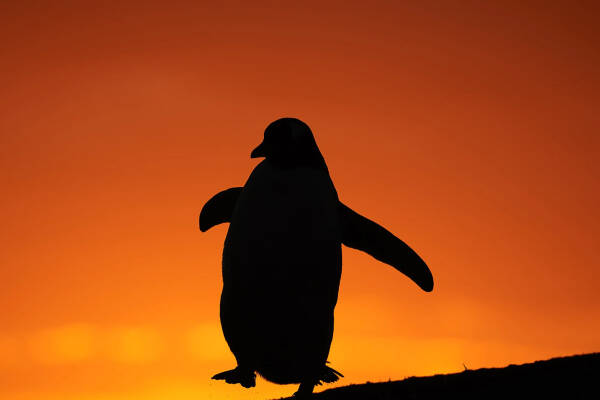
In the setting sun, the penguin looks like it's dancing. I lay on the ground, waiting and hoping that a suitable penguin would pass by within a few minutes of the setting sun providing ideal light for the silhouettes. The penguin obliged, beak, feet and flippers all perfectly positioned as it passed. I intentionally underexposed the image slightly to enhance the contrast between the sunset colors and the penguin silhouettes.
The Canon EOS-1D X Mark II comes with a Canon 100–400mm f/4.5–5.6 II lens. Focal length 371mm; 1/1,600 sec; f/5.6; ISO 100.
Life hangs in the balance
Glenn Nelson, United States of America. Category: Bird Behavior.
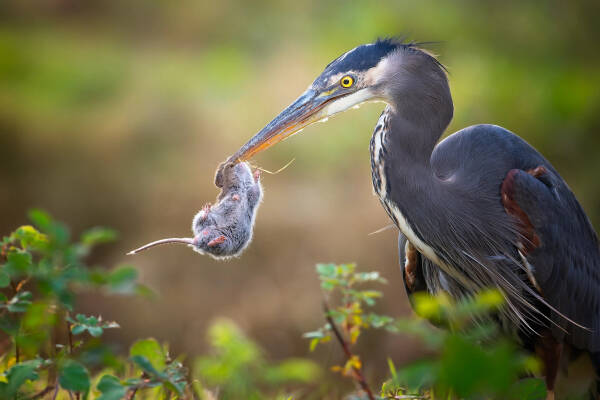 < /span>
< /span>
Great blue heron (Ardea Herodias). Skagit Valley, Washington, USA.
I spend most of the year photographing great blue herons, the official bird of my hometown of Seattle. I had just acquired a brand new lens and wanted to try something different, so I pulled over to the side of the road to observe a heron in a field. Until then, I had only been photographing these birds near water. I was so shocked when the bird picked up a vole that I had to force myself to keep taking the photo. Some people will find this photo too scary to look at, but the heron's choice of prey will surprise many. Not really: After all, we humans eat other mammals in addition to birds.
The Nikon Z 6 comes with a Nikon 500mm f/5.6 PF lens. Focal length 500mm; 1/3,200 sec; f/5.6; ISO 2,800.
Bewitched by love
Marty Phillips, United States of America. Category: Bird Behavior.
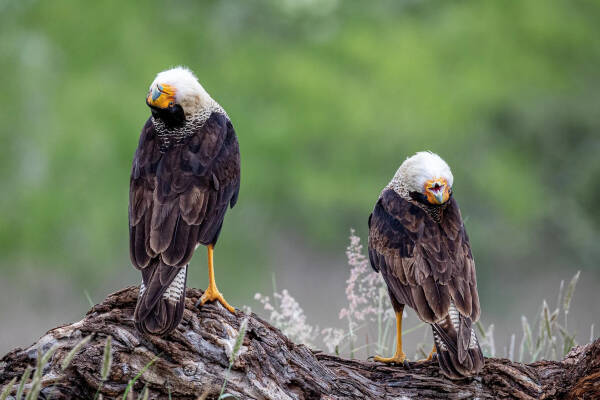
I traveled to the Rio Grande area of Texas for my first bird photography workshop. This photo was taken at a site where birds are regularly fed, and among the species attracted are Crested Caracaras. Most of the time, they just sit around, so imagine my delight in being able to take photos of these two engaging in mating behavior.
Canon EOS 5D Mark IV with Canon 100–400mm f/4.5–5.6 II lens. Focal length 400mm; 1/500 sec; f/5.6; ISO 2,000.
Hummingbird Hideaway
Liron Gertzman, Canada. Category: Bird Behavior.
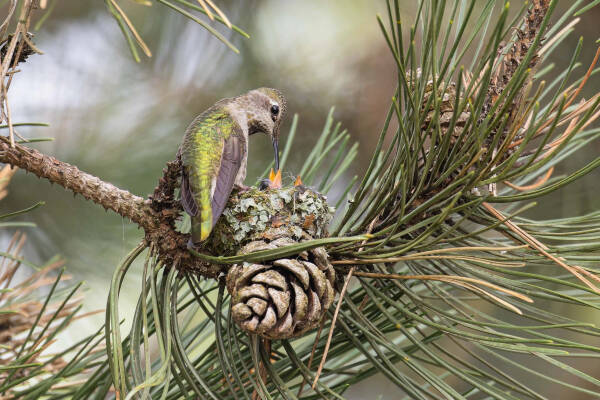
During the Covid-19 pandemic, travel restrictions meant that my photography was limited to my immediate area for quite some time. I decided to take this opportunity to learn as much as possible about the local scene in Vancouver. Every morning I venture to my local park to look for birds and wildlife.
Over the course of the spring, I managed to find seven Anna's hummingbird nests in the area. Not wanting to disturb this important and sensitive stage of the bird's life cycle, I keep a reasonable distance from the nest and limit visits to a maximum of 15 minutes.
I've been observing this particularly beautiful nest for weeks as a hummingbird works hard to build it and hatch her eggs. I was delighted when I stopped one afternoon and saw two little beaks sticking out of the nest! I captured this intimate moment as their mother flew over to feed them.
The Canon R5 comes with a Canon 100–400mm f/4.5–5.6 II lens and 1.4x teleconverter. Focal length 560mm; 1/160 sec; f/8; ISO 800.
Highland Buzzard and Korsak Fox
Wang Baozhu, China. Category: Bird Behavior.
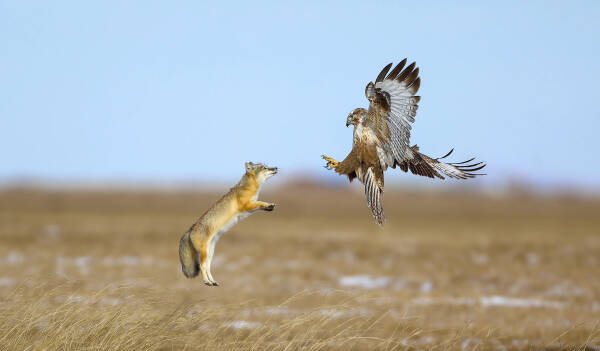
This photo was taken in Mandu Grassland, Dongwu Banner, Inner Mongolia. Highland vultures and Corsac foxes ( Vulpes corsac ) are both apex predators in this grassy environment, with their diets consisting mainly of small rodents. Therefore, they are competitors when it comes to eating and sometimes even fight each other for food.
This confrontation is usually for show, a battle of wills that never leads to a fight to the death. In this case, the Highland Vulture decided to abandon its food and fly away.
The Canon EOS 5D Mark IV comes with a Canon 600mm f/4 lens. Focal length 600mm; 1/1,600 sec; f/4, ISO 160.
animal tags:
We created this article in conjunction with AI technology, then made sure it was fact-checked and edited by a Animals Top editor.